Ganymede, the largest moon in the solar system, is even larger than Mercury and Pluto. Previous studies have found evidence that beneath its thick ice shell lies a salty ocean 10 times deeper than Earth's.
But many questions remain about the moon, and scientists need higher-resolution surface images to solve the mysteries of Ganymede's history and evolution.
Grooves on Ganymede's surface form concentric circles around a point that has led some astronomers to believe the Moon experienced a major impact event in the past.
"Jupiter's moons Io, Europa, Ganymede and Callisto all have interesting features, but what caught my attention were the grooves on Ganymede," said Naoyuki Hirata, associate professor of planetary science at Kobe University in Japan.
“We know that this feature was formed by an asteroid collision about 4 billion years ago, but we are not sure how large this impact was and how it affected the moon.”
Hirata, author of the study, published Tuesday in the journal Scientific Reports, explored the cause of Ganymede's groove system and the aftermath of the collision — which could be further investigated by the European Space Agency's Juice spacecraft, which is currently studying Jupiter and its moons.
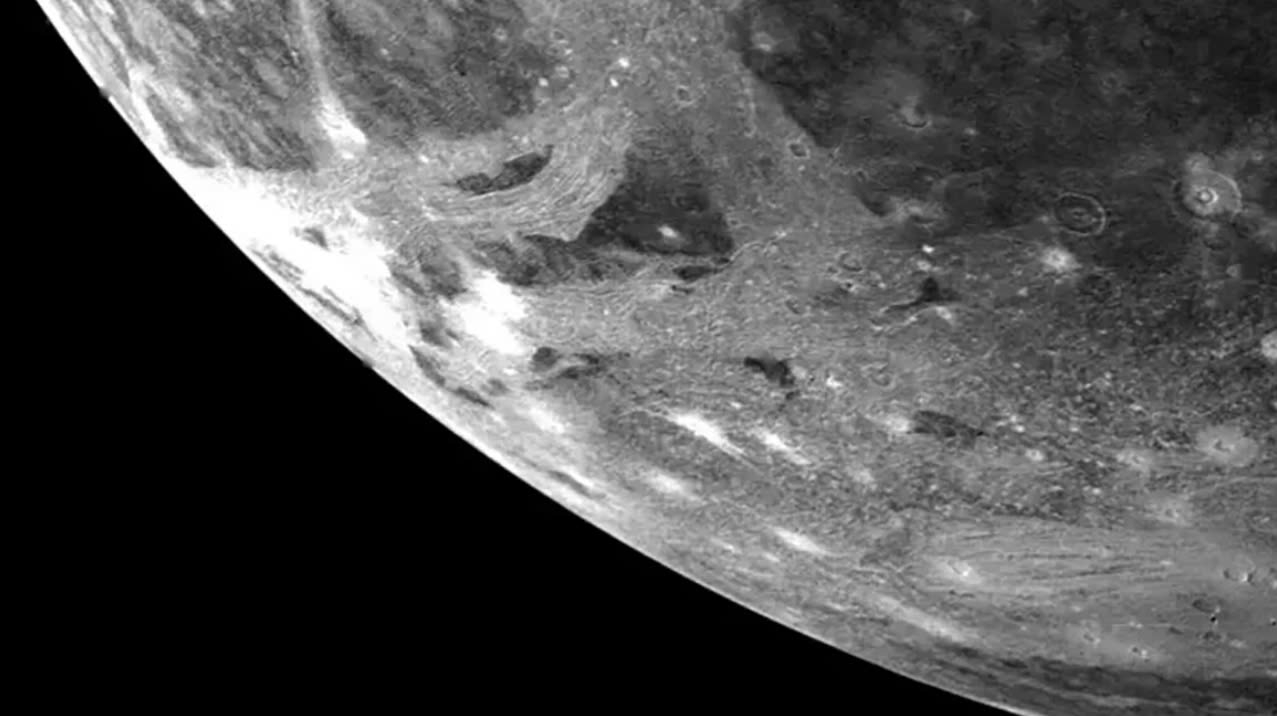
Satellite image of Ganymede taken on March 5, 1979, from a distance of 151,800 miles (244,298 km). (Image: NASA)
The collision in history
Ganymede has long intrigued Hirata, who said he believes that discovering how it evolved is “very meaningful.” Hirata has closely observed a system of grooves on Ganymede, extending from one point on the moon’s surface, that resemble concentric cracks that form when a rock hits a car windshield, he said.
Hirata noticed that the center point of the groove lies along the moon's rotation axis, which implies that there may have been a large impact that caused a complete reorientation of the Moon.
Previous studies have suggested that a large body collided with Pluto, rearranging the distribution of ice and forming a distinctive “heart” on the planet’s surface. Hirata said he believes something similar happened on Ganymede, with an icy crust and ocean beneath its surface.
A sudden change in the way mass is distributed on a planet can shift its axis, or the imaginary line around which celestial bodies orbit. When a large asteroid hits a planet, it creates a gravitational anomaly that changes the way a planet spins. So Hirata calculated what impact might have caused Ganymede's current orientation.
His calculations showed that an asteroid about 186 miles (300 km) wide created an impact crater about 870 to 994 miles (1,400 to 1,600 km) in diameter.
The asteroid is 20 times larger than the one that hit what is now the Yucatán Peninsula in Chicxulub, Mexico, leading to the extinction of the dinosaurs on Earth 66 million years ago. The impact crater on Ganymede is 25% the size of Jupiter's moon, according to the study.
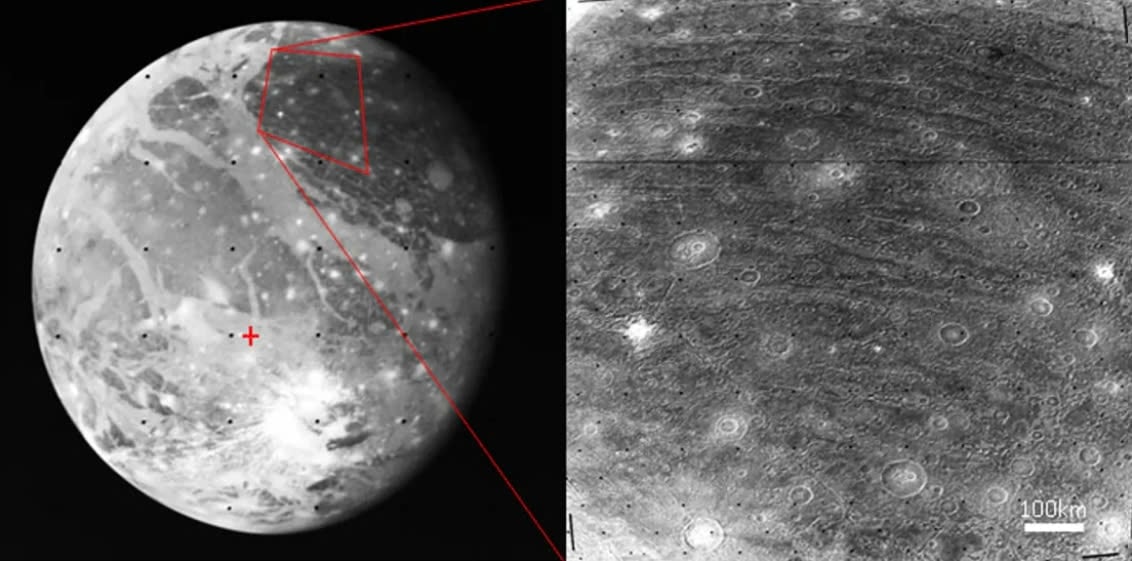
Ganymede is covered with grooves (right). In the largest groove system, the ridges form concentric circles (left, red cross). (Photo: Naoyuki Hirata)
Juice Mission Investigation
Hirata said it’s still unclear how Ganymede’s axis shifted. But future data collected by Juice, or Jupiter Icy Moons Explorer, could shed light on Ganymede’s history and the impact.
The spacecraft, launched in April 2023, completed its flyby of Earth and the Moon on August 21, putting it on track to reach Jupiter and its moons in 2031.
Adeene Denton, a researcher at the Lunar and Planetary Laboratory at the University of Arizona, said it would be difficult to know whether an ancient collision created the grooves on Ganymede without more data from the Juice mission. She was not involved in Hirata’s research.
“This paper presents an interesting premise, with much to ponder about the evolution of icy moons and ocean worlds ,” said Denton, co-author of an April study of the impact on Pluto and its vast basin, called Sputnik Planitia, which forms the heart-shaped left lobe.
“It is worth noting that it can be a bit sceptical to consider ancient, degraded geological features on celestial bodies and how they affect a planet’s orientation,” she said. “With so little information about these features, it would be difficult to identify this feature as a basin, as well as a potential mass anomaly. Fortunately, unlike Pluto and (Sputnik Planitia), we will soon be returning to Ganymede and may have the additional information needed to resolve this issue.”
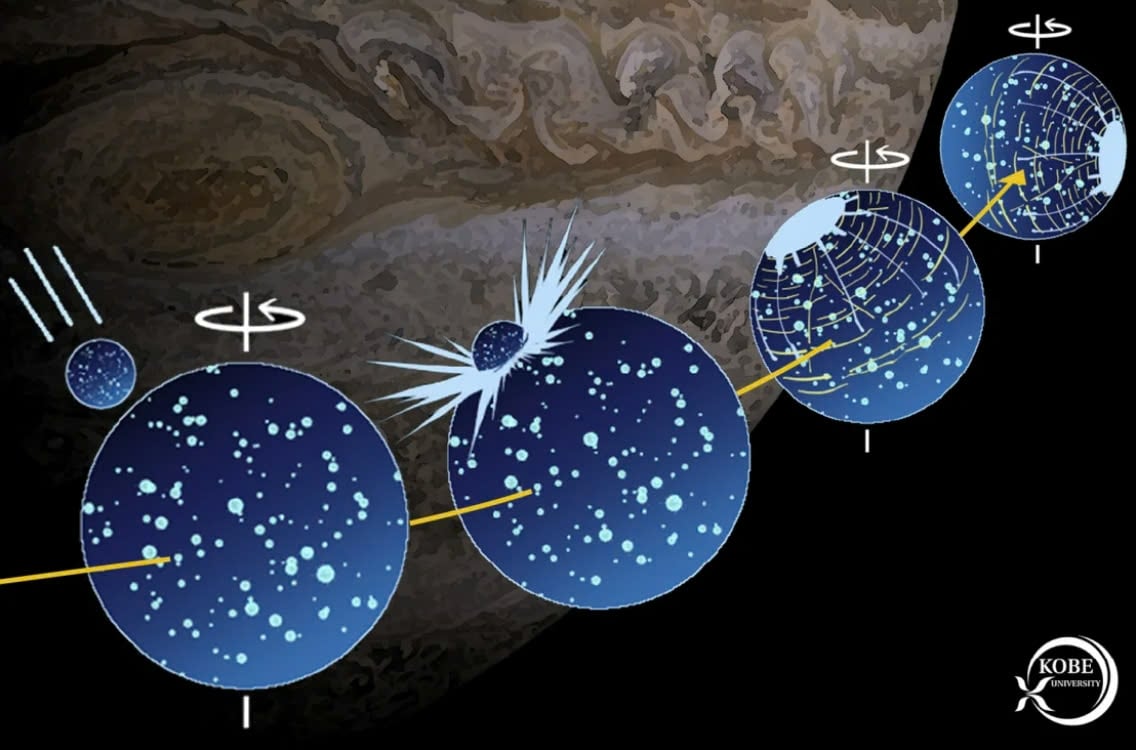
An illustration depicting a possible collision that could shift Ganymede's axis. (Photo: Naoyuki Hirata)
Researchers believe Ganymede’s interior may be like a sandwich, stacked with alternating layers of ice and ocean. Understanding the impact that changed the moon could reveal interesting structures inside, Hirata said.
“I would like to understand the origin and evolution of Ganymede and other Jupiter moons,” he said. “This giant impact must have had a significant impact on Ganymede, but the thermal effects and internal structure of Ganymede have not yet been studied. I believe that further research into the evolution of icy moons’ interiors may be warranted.”
Ha Trang (according to CNN)
Source: https://www.congluan.vn/tieu-hanh-tinh-da-huy-diet-loai-khung-long-xuat-phat-tu-ben-ngoai-sao-moc-post310881.html


![[Photo] Closing ceremony of the 18th Congress of Hanoi Party Committee](https://vphoto.vietnam.vn/thumb/1200x675/vietnam/resource/IMAGE/2025/10/17/1760704850107_ndo_br_1-jpg.webp)

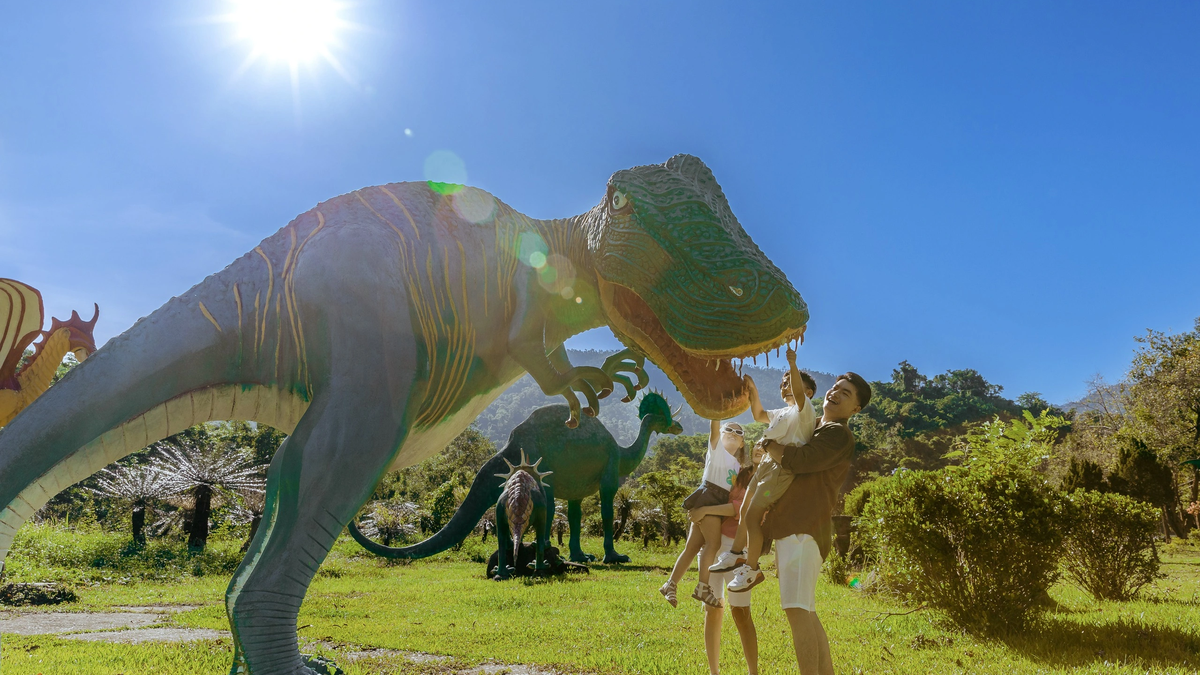





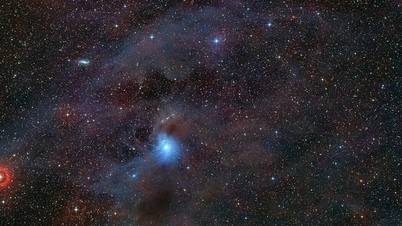

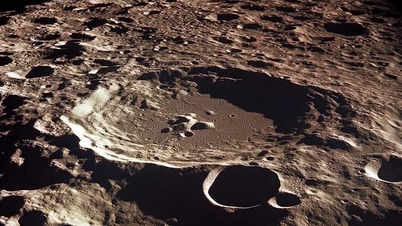

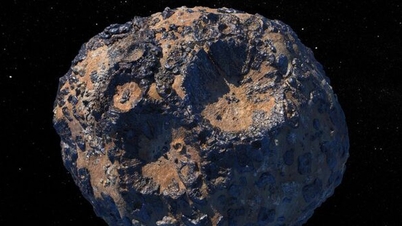
























![[Photo] Nhan Dan Newspaper launches “Fatherland in the Heart: The Concert Film”](https://vphoto.vietnam.vn/thumb/1200x675/vietnam/resource/IMAGE/2025/10/16/1760622132545_thiet-ke-chua-co-ten-36-png.webp)










































































Comment (0)